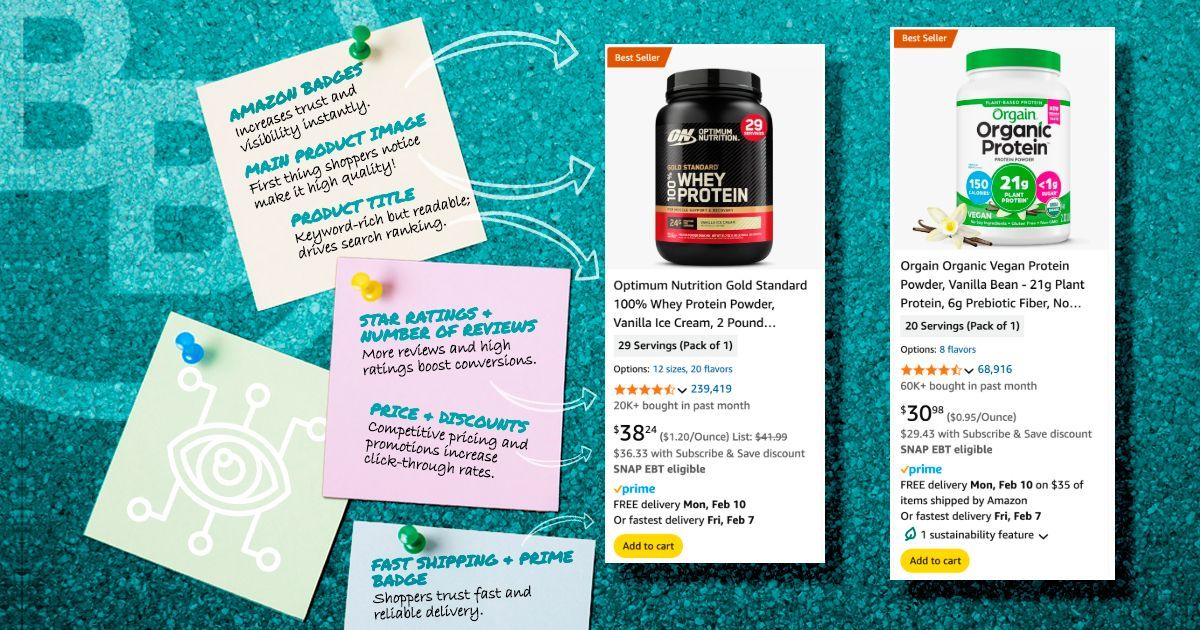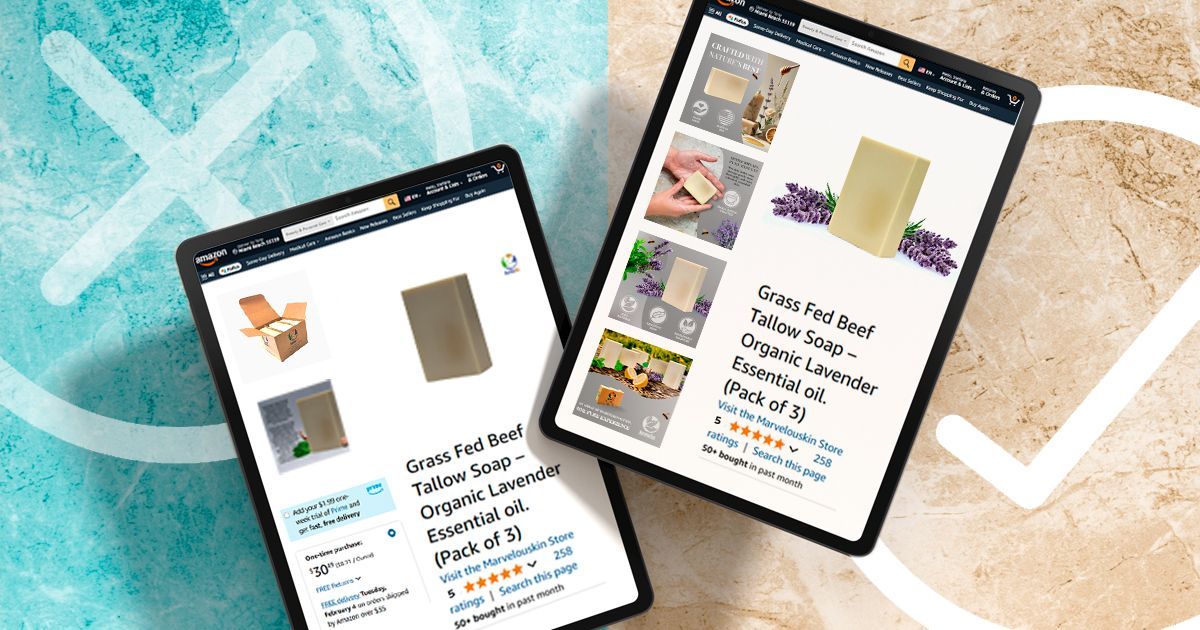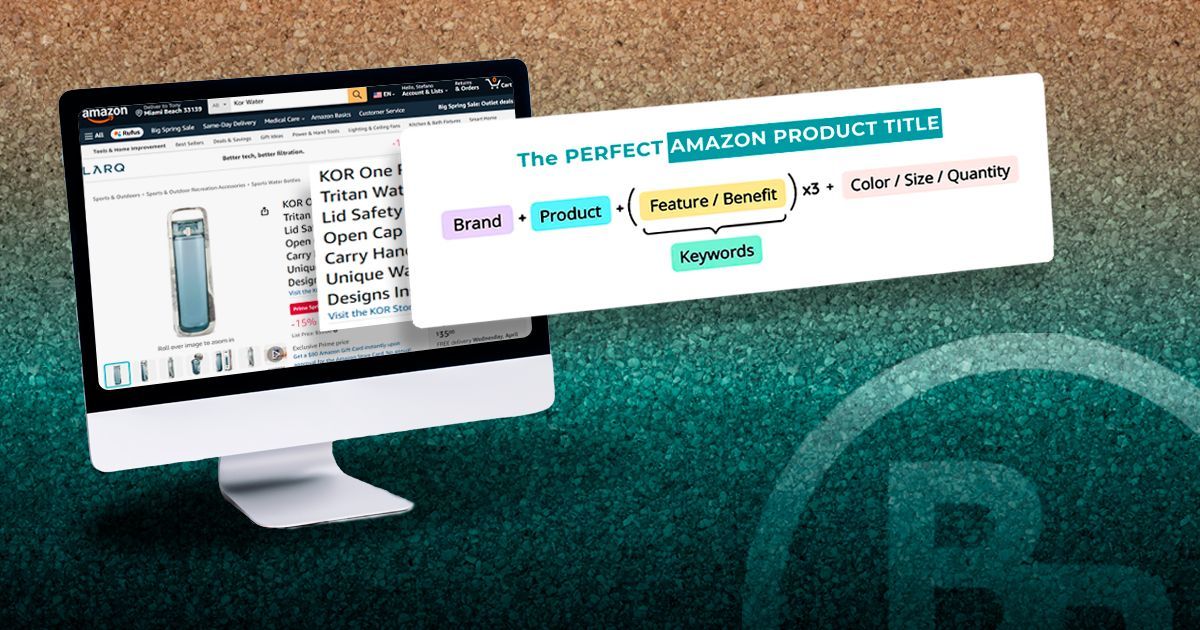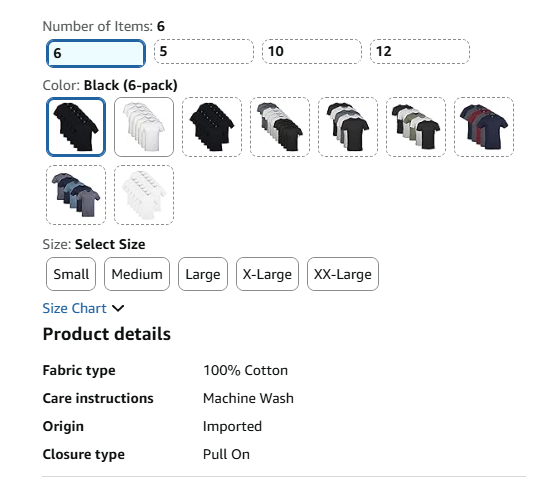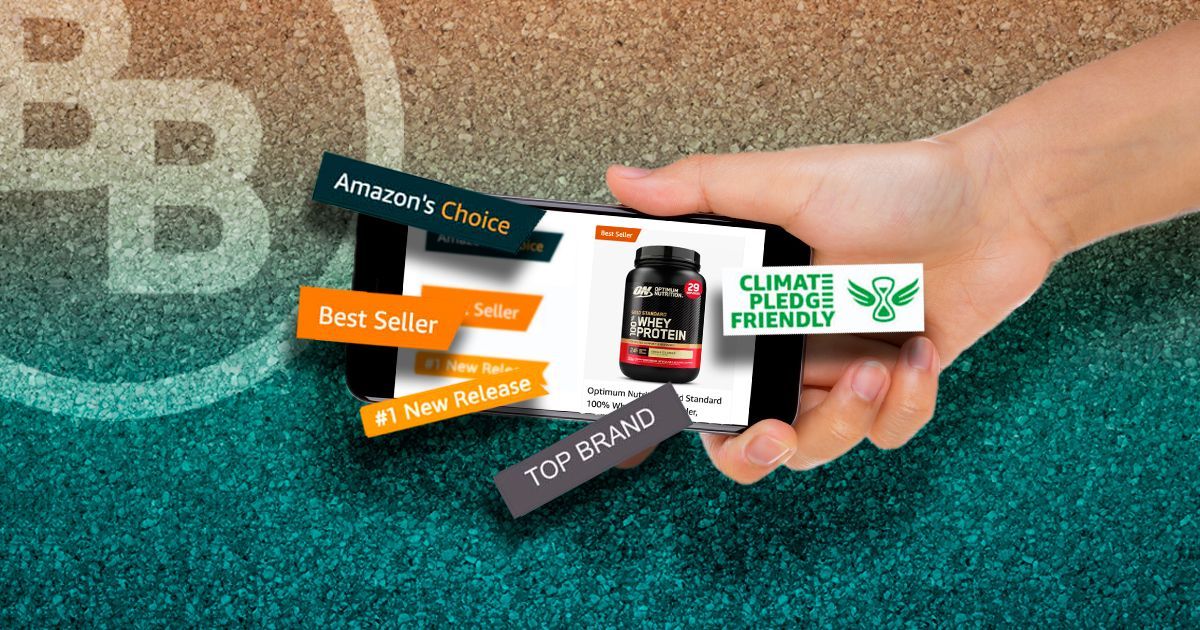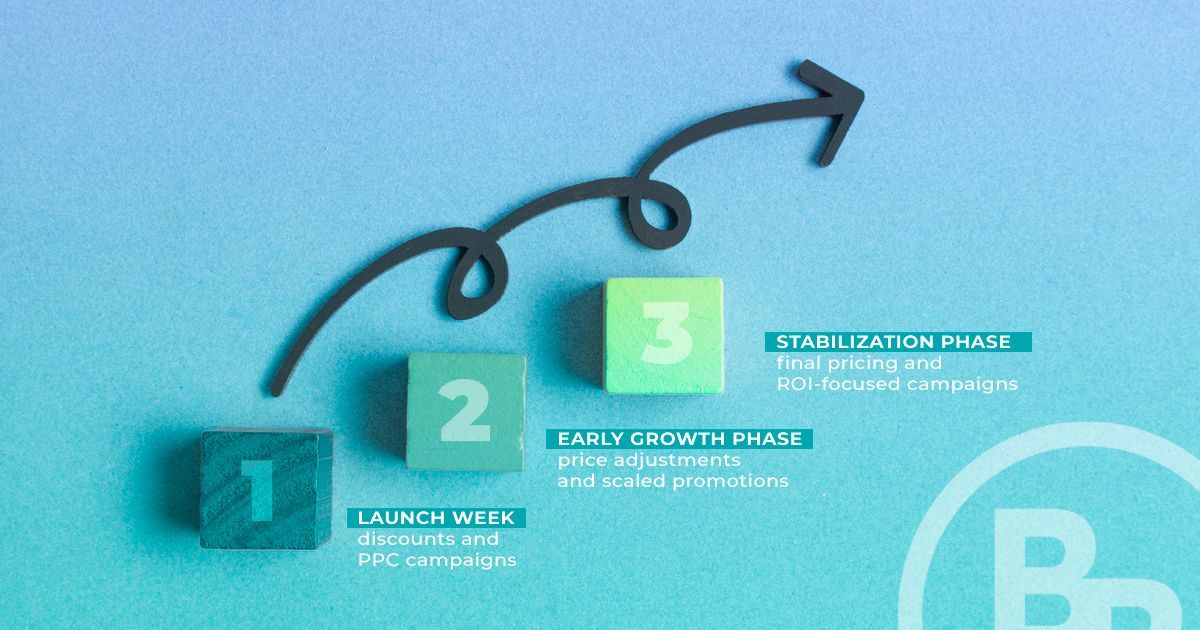Optimizing Your Product Listing to Dominate Amazon's Search Results
Introduction
In
Part 01, we unlocked the key components that make up Amazon's Organic Search Results Page (SERP). From product badges like "Amazon's Choice" and "Best Seller" to the vital main product image, title, and pricing details, each element plays a crucial role in driving visibility and influencing customer decisions.
Now in Part 02 we will dive deeper into actionable strategies for optimizing your product listings. In this section, we’ll explore the best practices for refining key elements like main images, product titles, and attribute tags to capture attention and increase conversions. We’ll show you how to make your listings stand out on both desktop and mobile, ensuring they are optimized for all viewing experiences. With the right tactics in place, you can create a more compelling and high-performing Amazon listing that captures the interest of potential buyers.
In the ever-competitive world of e-commerce, standing out on Amazon can mean the difference between a flourishing business and one that struggles to gain visibility. Let's delve into some actionable strategies to optimize your product listings and dominate Amazon's search results.
Best Practices for Main Images, Titles, and Attribute
Tags to Grab Attention (Optimized for Mobile & Desktop)
- High-Quality and Clear: Ensure your images are high resolution, well-lit, and professionally taken. The primary image should showcase the product clearly, with minimal background distractions.
- Mobile Optimization: Given that many shoppers use mobile devices, your images should be easily viewable on smaller screens. Avoid clutter and ensure the product is centered.
- Multiple Angles and Details: Include images from various angles and highlight key features and dimensions to give potential buyers a comprehensive view.
In addition to ensuring high-quality and mobile-optimized images, make sure that your image conveys value. This includes showcasing accessories, packaging, or any additional items that come with the product. Images should have proper lighting, be properly scaled (taking up at least 85% of the frame), and avoid clutter. A/B testing of different angles and lighting can help you optimize click-through rates (CTR)
- Keyword-Rich and Descriptive: Integrate relevant keywords naturally within your product titles. Use a clear structure: Brand + Key Feature + Product Type + Model/Size.
- Character Limits: Adhere to Amazon's character limits for titles, ensuring the most important information is front-loaded.
- Readability: Craft titles that are easy to read and understand. Avoid keyword stuffing which can make titles appear cluttered and confusing.
- Relevant Attributes: Utilize Amazon's attribute tags to highlight product features such as size, color, material, and compatibility.
- Consistency: Ensure attribute tags are consistent across similar products to enhance searchability and comparison.
- Optimization for Search: Think about what attributes your potential customers might search for and include those tags accordingly.
The strategic use of relevant attribute tags cannot be overstated. Apart from describing key product features, think about what potential customers are likely to search for and make sure to integrate these search terms into your tags.
Strategies to Improve Star Ratings,
Reviews, and 30-Day Velocity for Credibility
- Quality Assurance: Maintain a high standard of product quality to avoid negative reviews. Regularly inspect and update your product listings to ensure accuracy.
- Customer Feedback: Actively seek out customer feedback and use it to improve your products and services. Promptly address any issues raised in reviews.
Reviews
- Engage with Customers: Respond to reviews, both positive and negative. Show appreciation for positive feedback and provide solutions for any issues highlighted in negative reviews.
- Review Programs: Consider participating in Amazon's Early Reviewer Program or Vine Program to generate initial reviews and boost credibility.
- Follow-Up Emails: Send follow-up emails to customers asking for honest reviews and providing instructions on how to leave a review.
Maintaining product quality is paramount to avoid negative reviews, but engaging with customers can also significantly improve your reviews. Responding promptly to both positive and negative feedback, and using programs like Amazon Vine or Early Reviewer Program, helps generate initial reviews.
Additionally, you can incentivize customers by offering discounts or promoting flash sales, particularly during the first 30 days
30-Day Velocity
- Promotions and Discounts: Run limited-time promotions and discounts to boost sales velocity within the crucial first 30 days of listing.
- Ad Campaigns: Invest in Amazon Advertising to increase product visibility and drive initial sales.
- Inventory Management: Ensure you have sufficient inventory to meet demand during promotional periods to avoid stockouts and lost sales opportunities.
To build momentum within the first 30 days, run promotions, offer time-limited discounts, and leverage Amazon PPC campaigns. Ensure your stock levels are prepared for any potential sales spikes from these efforts.
How to Leverage Pricing, Discounts,
and Badges to Stand Out
Pricing
- Competitive Pricing:
Regularly analyze competitors' pricing and adjust your prices to remain competitive while maintaining profitability.
- Dynamic Pricing:
Utilize dynamic pricing tools to automatically adjust prices based on demand, competition, and other market factors.
The pricing strategy should follow a clear and sustainable path. Start with a promotional price and incrementally adjust as you move from the launch to the stabilization phase. Monitor competitors' prices to stay competitive while also maintaining healthy profit margins. Dynamic pricing tools can help automate price adjustments based on demand and market fluctuations
Discounts
- Coupons and Promotions: Offer coupons and promotional discounts to attract price-sensitive customers. Highlight these deals prominently on your product pages.
- Bundling:
Create product bundles that offer additional value to customers, making them more likely to choose your listing over others.
Offering a combination of initial discount, promo codes, and bundled offers can create value for the customer and push them toward purchasing. Coupons in particular can be highlighted on product pages to draw attention.
Badges
- Amazon Badges: Aim to earn Amazon badges such as "Amazon's Choice" or "Best Seller" by maintaining high ratings, positive reviews, and strong sales performance.
- Utilize Badges: Highlight any earned badges in your product descriptions and marketing materials to build trust and attract more customers.
Earning and showcasing badges like "Amazon’s Choice" or "Best Seller" can significantly build trust and increase conversions. To earn these badges, ensure your product has positive reviews, excellent ratings, and strong sales velocity.
Launch Strategy:
A Critical Component for Success
The key to successfully launching a new product is balancing an attractive pricing strategy with proper marketing efforts. Implement a differentiated pricing strategy over the first 90 days, from initial discounts to a stable price setting:
- Launch Week: Use a 30% discount, offer additional promo codes, and run low-budget PPC campaigns targeting high-conversion, low-competition keywords.
- Early Growth Phase (Weeks 2-3):
Slightly increase your price but keep it 25% below your target price. Introduce 5% discount coupons and scale up your PPC efforts.
- Mid-Growth Phase (Weeks 4-5): Offer occasional flash sales, adjust prices to 20% below the target, and focus on customer feedback.
- Stabilization and Final Target Phases: After maintaining engagement and analyzing performance, set your product at the target price and optimize PPC campaigns based on ROI.
Stay Tuned for Part 03:
How to Stop the Scroll &
Increase Clicks on Your Amazon Listings
In Part 03, we’ll take things up a notch by focusing on strategies designed to increase your clicks and stop the scroll.
We’ll guide you through the importance of A/B testing and optimizing your images, titles, and content to maximize CTR. Additionally, we’ll discuss how external factors like Buy Box competition and stock availability can influence your listing’s performance.
Stay tuned to learn how to capture shoppers’ attention and turn your Amazon listings into conversion machines!
Recent Blogs
By asteele
•
July 18, 2025
Discover smart pricing and promotional tactics for Amazon Sellers. Learn how to boost conversions, increase AOV, and stay competitive while protecting profits.
By asteele
•
June 23, 2025
Amazon Marketing Programs: Unlocking Sales Growth and Customer Engagement
By asteele
•
April 28, 2025
Discover actionable strategies to captivate shoppers on Amazon. This guide explains how to use high-quality images, compelling titles, and A/B testing to boost click-through rates and drive sales.
Show More

